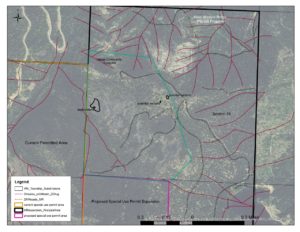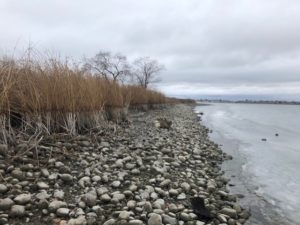| 1. Initial site visits (reconnaissance) - Conducted to determine if any regulated Critical Areas exist on a property that may affect current or future proposed development. Initial visits can be completed at the request of a property owner, the property owner's primary contact person, or a prospective buyer with property owner's permission. |  |
| 2. Feasibility anyalysis - Conducted to determine if a client's desired development plan will impact a regulated critical area or associated buffer area. This service can save clients time and money because it is important to be aware of Critical Areas regulations before paying money to have a surveyor or engineer design a project that can't be approved due to Critical Areas regulations. |  |
| 3. Wetland delineations - Conducted in accordance with the Army Corps of Engineers Wetland Delineation Manual and the Washington State Department of Ecology Rating System for Eastern Washington. This step is required if it is determined that any regulated wetland areas or associated protective buffer areas are located on the project site that may affected by a proposed activity. |  |
| 4. Stream, river and lake delineations of ordinary high water mark – Conducted using current OHWM guidelines provided by the Washington Department of Ecology. The OHWM is not always the top of bank and as obvious as it may appear. Ecosystems Northwest is trained and experienced in determining OHWM using field assessment methods. |  |
| 5. Detailed Mitigation/Restoration Plans – Prepared in accordance with the regulatory agencies guidelines to assist clients with project approval from all necessary environmental review agencies (federal, state, and local). These detailed reports include a text component, a map/visual component of proposed mitigation/restoration and detailed site plans. |  |
| 6. Monitoring of Installed Mitigation Plan and Preparation of Monitoring Reports – Once a mitigation/restoration plan has been approved by a regulatory agency and installed per the approved plans, Ecosystems Northwest monitors the installed mitigation plans for clients to ensure performance standards outlined in the mitigation plan are met. An annual monitoring report is completed for submittal to the regulatory agency, complete with a description of the mitigation site’s status and photographs. At the end of the mitigation monitoring and maintenance period outlined in the mitigation plan, a final report is submitted to show that all mitigation performance standards have been met. |  |
| 7. Project Management – Assistance obtaining development permits when a jurisdiction’s environmental code requires a permit to be obtained. Ecosystems Northwest can assist clients with the often cumbersome and daunting federal, state, county, and city environmental permitting processes. | |
| 8. Joint Aquatic Resource Project Application (JARPA) – Completed and submitted to the appropriate review agencies (only of your project requires this to be completed). |  |
| 9. Attendance at Site or Office Meetings with Regulatory Agency Personnel – At the client’s request, Ecosystems Northwest attends meetings with staff members of environmental review agencies acting on behalf of clients to determine the most efficient and cost effective approach to achieving approval of the proposed development project. | |
| 10. Attendance at Public Hearings and Legal Meetings – On behalf of clients as the technical Critical Areas expert for wetland, stream, and protected wildlife habitat regulations. I have attended several public hearings as the lead technical expert related to code enforcement cases involving Critical Areas Issues. |  |